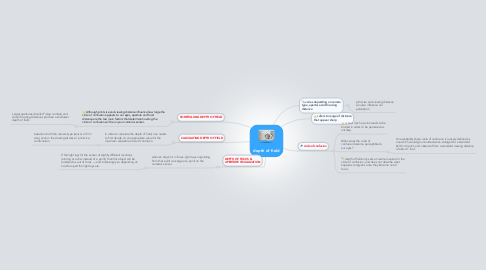depth of field
by Nicole Eckloff


1. CONTROLLING DEPTH OF FIELD
1.1. Although print size and viewing distance influence how large the circle of confusion appears to our eyes, aperture and focal distance are the two main factors that determine how big the circle of confusion will be on your camera's sensor.
1.1.1. Larger apertures (smaller F-stop number) and closer focusing distances produce a shallower depth of field.
2. CALCULATING DEPTH OF FIELD
2.1. In order to calculate the depth of field, one needs to first decide on an appropriate value for the maximum allowable circle of confusion.
2.1.1. based on both the camera type (sensor or film size), and on the viewing distance / print size combination.
3. DEPTH OF FOCUS & APERTURE VISUALIZATION
3.1. when an object is in focus, light rays originating from that point converge at a point on the camera's sensor.
3.1.1. If the light rays hit the sensor at slightly different locations (arriving at a disc instead of a point), then this object will be rendered as out of focus — and increasingly so depending on how far apart the light rays are.
4. refers to range of distance that appear sharp
5. varies depending on camera type, aperture and focusing distance
5.1. print size and viewing distance can also influence our perception
6. circle of confusion
6.1. is how much a point needs to be blurred in order to be perceived as unsharp.
6.2. When does the circle of confusion become perceptible to our eyes?
6.2.1. An acceptably sharp circle of confusion is loosely defined as one which would go unnoticed when enlarged to a standard 8x10 inch print, and observed from a standard viewing distance of about 1 foot.
